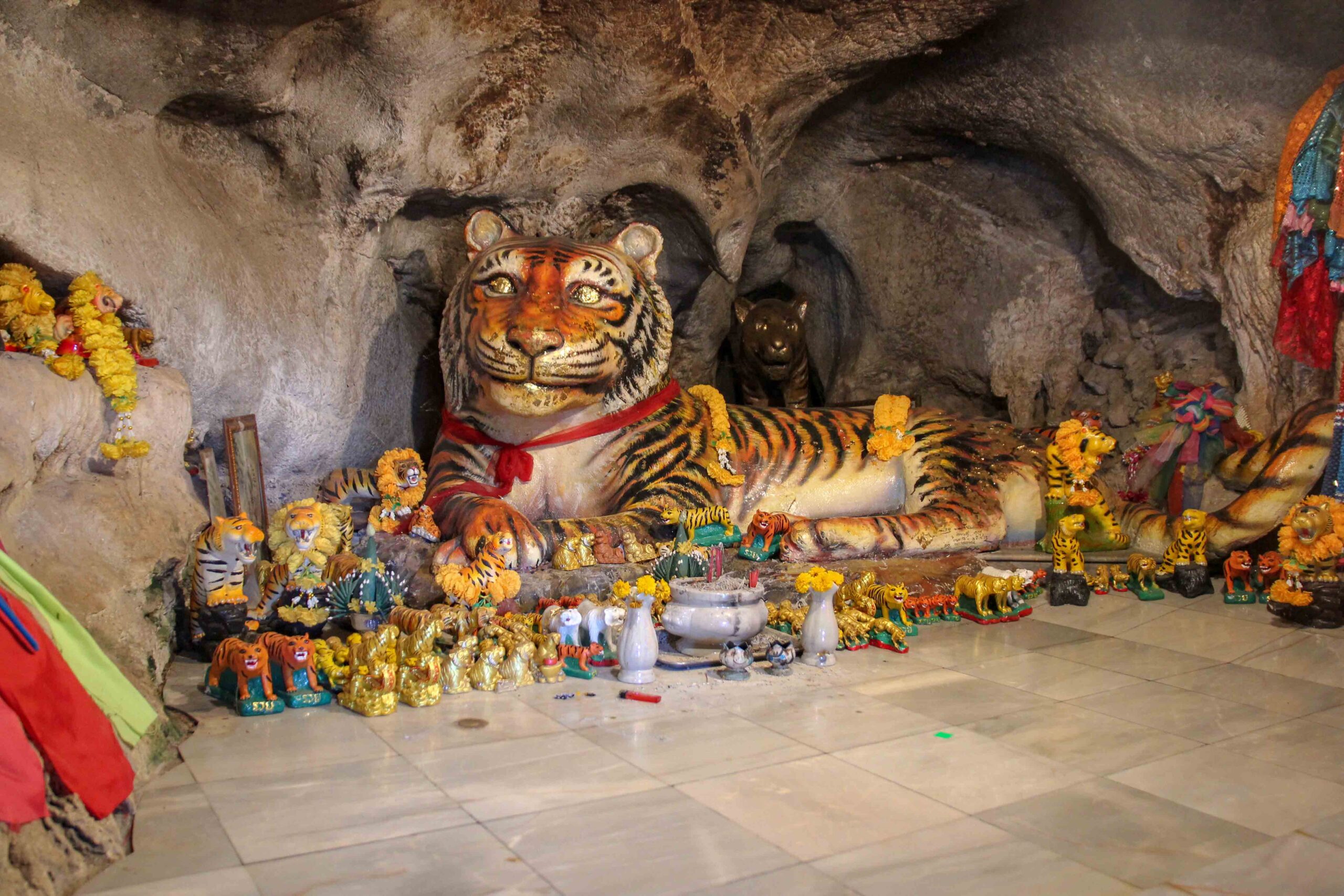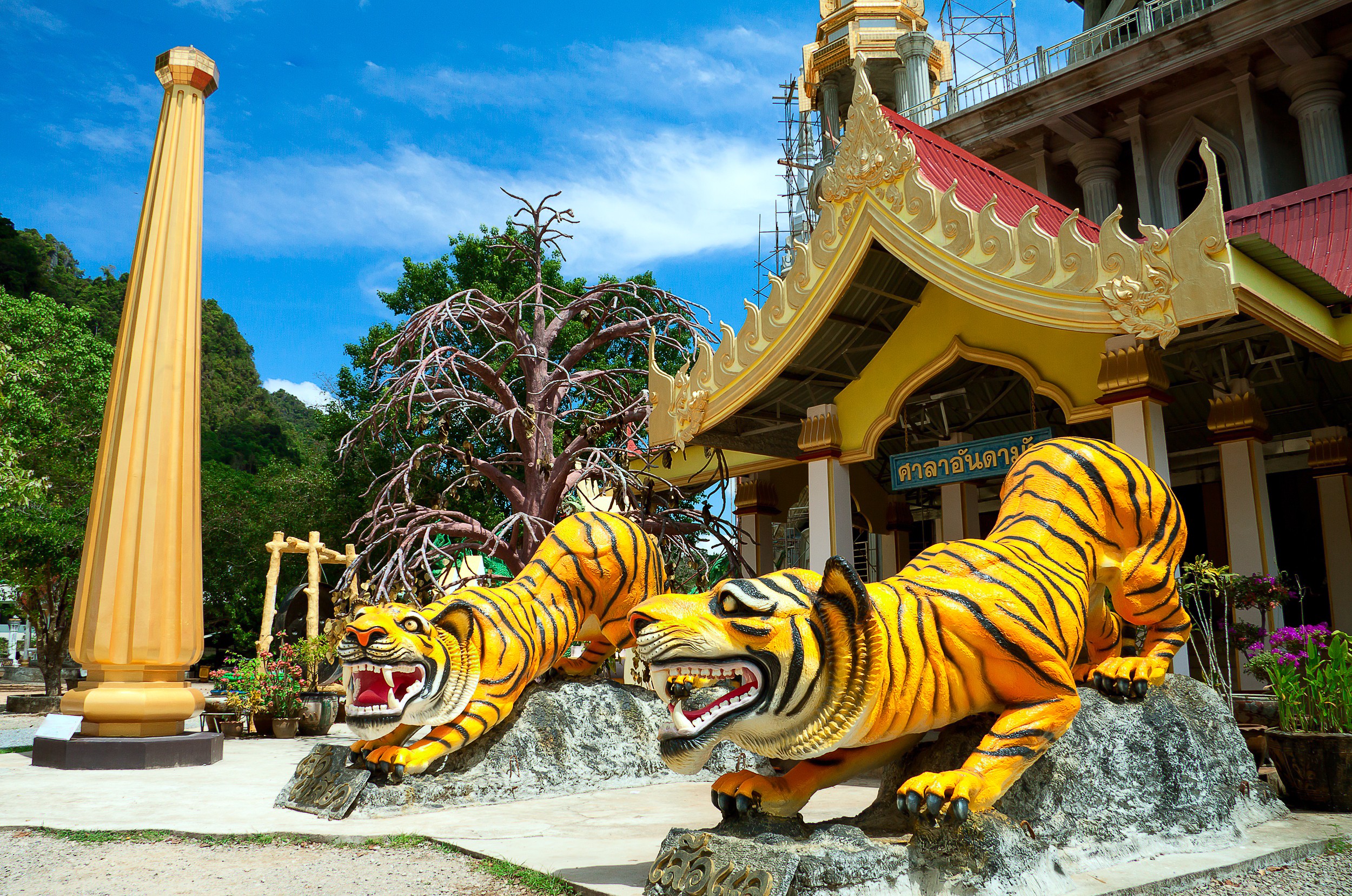
The Mystique of Tiger Temple Krabi: The Ultimate Guide
Now, Tiger Temple Krabi has become a mystery to many. An eerie sight, yet many tourists flock here for an unusual experience with brave wildcats. It's beyond just a quick photo opportunity; when you step there, Thai culture, spirituality, and wildlife coalesce right before your eyes. Animal welfare is usually a major issue of concern that comes with any tiger-related attraction, and here, it is almost always for very good reasons. Everything you need to know is provided: history, activities, safety tips, and ethically concerning aspects so that you can assess when putting such a visit into context with your own values.
History and Background of Tiger Temple Krabi Origin and Evolution
Years back, Tiger Temple Krabi was started by a local who wanted a spiritual place with a little wild twist. Over the years, it became a major tourist attraction where spirituality was blended with wildlife attraction. In the beginning, it was primarily a place for Buddhist practices, but today it provides audiences with a front-row seat for tiger encounters. The mixture of the spiritual and the entertaining, in the opinion of some animal welfare critics, has blurred the lines over the site’s true purpose.
Cultural and Religious Significance
In Thai culture, tigers symbolise strength, protection, and good luck. Oftentimes, these fierce animals are regarded as spiritual protectors in Thai folklore. The temple incorporates these beliefs by treating tigers as sacred animals and encourages visitors to admire their strength and beauty. Yet, the mixture of religious traditions with tourism creates confusion regarding the real purpose of the site.

Controversies and Conservation Efforts
Many animal welfare groups question the ethics of such sites holding captive tigers. The critics grow increasingly concerned about how the animals are really cared for and whether they are genuinely being protected. Nevertheless, some local groups are working tirelessly to improve the situation and promote conservation. Experts and NGOs are urging tourists to ask tough questions and to support places that respect animal welfare and responsible tourism.

What to Expect During a Visit to Tiger Temple Krabi
Location and Access
The temple is enclaved within the larger Krabi Province, nearly an hour from the cramped town of Krabi itself. You may go there by car or book a tour to get there; if you're adventurous, you could ride a bicycle as well. Local guides will know the best routes, and many are provided by tour agencies for safe excursions.
Entry Fees and Opening Hours
Entry fees are in the range of 300 to 500 Thai Baht, depending on your nationality and the season. The temple is open from early morning until late afternoon on most days; however, some days are considered off. It is best to visit between November and February, which assures pleasant weather for exploration.

Attractions and Activities
Most tourists come to view and take photographs with the tigers. But don't forget that all the interactions are strictly supervised: there is no free-roaming with wildcats. But in addition to tigers, some lovely Buddhist statues, meditation areas, and colourful celebrations will take place at special times during the year. Thai festivals give tourists insight into local spirituality.
Safety and Ethical Considerations Animal Welfare and Treatment
Some admire the site's efforts to provide care to the tigers; some regard their conditions as appalling. However, conditions vary from individual to individual. Some animals are reported to be housed in small cages or under poor conditions, while others are fine. When looking for such facilities, pay special attention to whether they practice conservation and rehabilitation instead of just being a place for tourists to take pictures. Experts are of the opinion that true animal welfare means they aren't exploited or overhandled.
Tips for a Responsible Visit
Ask the staff how animals are cared for to ensure a respectful trip. Do not touch or feed tigers outside of sanctioned interaction. If the way animals are treated makes you uncomfortable, skip the visit altogether and focus on supporting sanctuaries dedicated to their rescue and rehabilitation.
Legal Regulations
Though strict wildlife protection laws exist in Thailand, enforcement is often not forthcoming. These international standards provide a guide for ethical standards in wildlife attraction management. Supporting places that comply with these rules ensures fair treatment of animals and their preservation for future generations.
Best Practices and Other Tips for Tourists Plan Your Visit
Get there early to bask in cooler weather and fewer crowds. A two-to-three-hour stay at the temple allows for ample viewing. Planning ahead will set up an unhurried experience, giving greater meaning to your visit.
Photography and Interaction
Bring a good camera and ask permission before taking close-ups. During encounters with tigers, be respectful—no loud calls or sudden movements. Stay on designated paths and carefully follow instructions given by the staff regarding respect and the experience—for the animals and for humans alike.
Places Worth Visiting Nearby
Krabi has many more gems aside from Tiger Temple. Hit the enchanted shores of Railay Beach, head to the Phi Phi Islands, or enjoy the hike among national parks like Than Bok Khorani. Effort in pairing your trip with boat excursions or local marketplace visits for a dash of true Thailand experience.
Conclusion
The secrets behind Tiger Temple Krabi are culture, spirituality, and wildlife. It does present a great opportunity for memories of unforgettable encounters with tigers, another point of discussion for ethical tourism. Always choose sanctuaries ensuring animal safety and conservation. Your visit may be fun yet responsible by preserving the lives of these magnificent creatures for years to come. Smart travel, great respect, and wonderful sights of Krabi.
Supporting ethical wildlife experiences not only enriches your time in Thailand but also contributes to protecting this nation's rich natural heritage. Make your journey meaningful—travel wisely and leave only your footprints.
